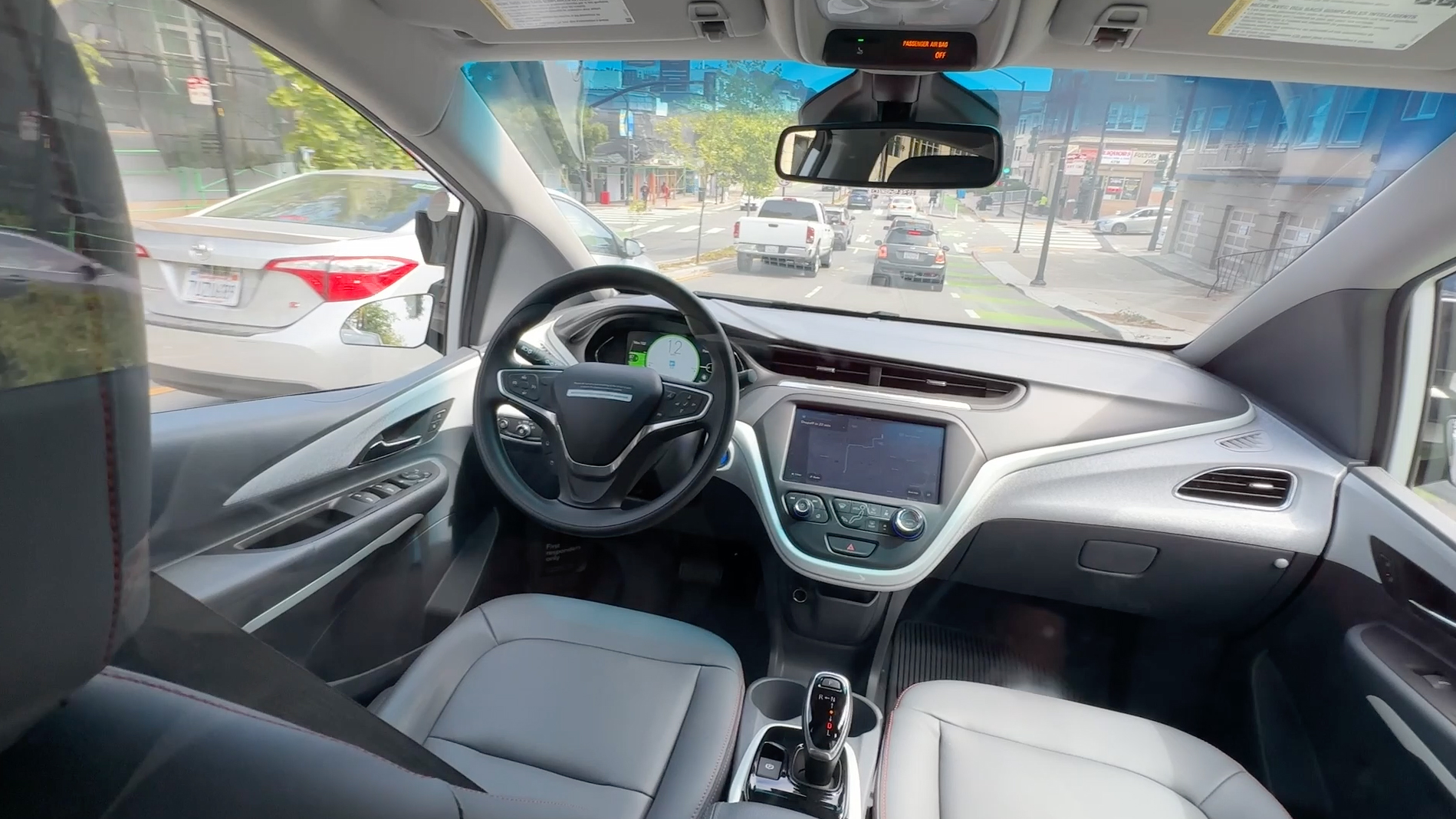Self-driving cars once seemed like futuristic wonders, however, in tech-savvy San Francisco, autonomous vehicles are now just about everywhere, making deliveries and shuttling passengers.
Despite the city’s legacy of embracing new technology, San Francisco has become one of the fiercest battle grounds in the debate over autonomous vehicles, and whether they can safely coexist on streets already bustling with human drivers, cyclists, pedestrians, and other urban obstacles.
Across California, a total of 41 companies currently operate more than 2,000 autonomous vehicles in California. While most have test drivers inside, who are capable of overriding the cars when necessary, hundreds of vehicles on the road right now have no one behind the wheel.
As autonomous vehicle companies now seek to further expand their operations in the San Francisco, some say it’s time to hit the brakes on the emerging technology.
Questions, however, about safety and how exactly human drivers stack up against their A.I. counterparts don’t always have simple answers.
State transportation records, obtained by NBC Bay Area’s Investigative Unit and NBC News, reveal self-driving cars have been involved in hundreds of crashes across the state over the past five years. Most self-driving vehicles in California have test drivers traveling inside, who are able to override the cars’ computer systems.
According to records from the California DMV, those safety drivers had to override their vehicles thousands of times last year, including for safety reasons.
In another incident that snarled up rush hour traffic, a self-driving car shuttling Senior Investigative Reporter Bigad Shaban, swerved, then simply stopped on a major thoroughfare in the Outer Sunset neighborhood, blocking two lanes of traffic for 20 minutes.
Despite the technology’s current imperfections, industry insiders are quick to highlight the technology’s safety benefits, which they argue allow the vehicles to often outperform human drivers.
“Our cars don’t drive drunk, they don’t get distracted,” said Prashanthi Raman, Vice President of Global Government Affairs at Cruise, which is majority-owned by the automotive giant General Motors.
“In the vast majority of situations, the vehicle behaves exactly like it's supposed to do, similar to a human driver,” Raman said. “We're really looking to improve interactions where that doesn't work as appropriately as it should.”
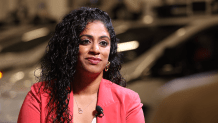
Cruise and its major competitor, Waymo, owned by Google’s parent company Alphabet, are two of the largest driverless car companies in the United States.
Both companies are currently petitioning regulators with the California Public Utilities Commission to expand their robotaxi services in San Francisco, the state’s largest testing ground for autonomous vehicles, so passengers can request rides from their phones, 24 hours a day.
Waymo and Cruise already hold test permits from the California DMV that allow them to operate their vehicles at all hours of the day throughout San Francisco. However, both companies have their ultimate sights set on ride-sharing services, similar to Uber and Lyft, which requires the companies to secure separate permission from the California Public Utilities Commission. As of now, Cruise is only allowed to collect fares from passengers from 10 p.m. to 6 a.m. in select parts of the city. Waymo isn’t allowed to charge for its robotaxi services at all. On Thursday, however, the CPUC’s five commissioners will vote on whether to allow both companies to expand their ride-sharing services to all of San Francisco, regardless of the time of day.
It’s not always a smooth ride
Regulations in California require autonomous vehicle companies to self-report each collision involving an autonomous vehicle. Transportation documents, obtained by the NBC Bay Area Investigative Unit through a public records request, show autonomous cars have been in involved in at least 532 collisions since June 2018. However, in 252 of those crashes, the car was being fully controlled by the test driver, known in the industry as ‘conventional mode.’ The remaining 280 crashes occurred while the car was in full control, known as ‘autonomous mode,’ resulting in at least 64 injuries and a dead dog.
Of those crashes, 42 were truly driverless – with no safety driver inside the vehicle.
* An at-fault determination is typically made by law enforcement and insurance companies, according to the California DMV, which aimed to track at-fault data during the onset of the state’s testing program by collecting police reports and insurance-related information. Law enforcement, however, does not always respond to the scene of an accident and so an at-fault determination isn’t always made. As a result, the California DMV, says it has since stopped collecting such information and has not documented an at-fault determination since Nov. 25, 2019.
A California Department of Motor Vehicles (DMV) database, obtained by the Investigative Unit, details collisions with other vehicles, bicyclists, scooterists, skateboarders, and even city busses.
Self-driving cars were not always at fault in those crashes, according to the records. It’s unclear from the data, however, exactly how often other parties were to blame.
For autonomous vehicles in testing, with actual humans inside who can take the wheel, DMV records reveal the human drivers had to override their cars more than 8,000 times last year alone.
“If humans have to override these vehicles because of a safety issue, they’re not good to go,” said San Francisco Fire Chief Jeanine Nicholson, who said she opposes the expansion of driverless cars until the technology can be improved.
“I am not anti-technology. I am pro safety,” Nicholson said. “There's a lot of smart people on both sides and they can troubleshoot and they can work together to figure things out and make things better, and I have seen no effort on the [autonomous vehicle] side to make that happen. And it's really distressing.”
Nicholson says for months her department has asked Cruise to make its engineers available to meet with fire department staff to craft solutions to some of the technology’s shortcomings relating to emergency scenes. Nicholson says those requests have so far gone nowhere.
Cruise, however, denies those claims.
“We know that our relationship with city agencies and city departments are very important,” Raman said. “We continue to work with them and have met with them dozens of times over the last 18 months.”
While Nicholson acknowledges she and her staff have previously met with representatives from autonomous vehicle companies, those meetings have yet to yield any substantial solutions to the problems, she says, the fire department has repeatedly raised.
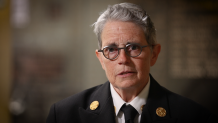
In San Francisco, cameras have captured self-driving cars getting confused by emergency scenes, sometimes plowing into caution tape, or blocking fire trucks.
Without a driver in the car, Nicholson said, it’s difficult to get the vehicles to move when they’re impeding first responders. The chief said her crews have even had to smash the window of a driverless car to stop it from getting in their way.
In instances where first responders need help moving an unresponsive driverless vehicle, fire department officials have been given a toll free phone number to call to reach a company representative.
“We don't have time to call a 1-800 number when we are doing CPR on someone,” Nicholson said.
Waymo never responded to NBC Bay Area’s interview request.
Raman, one of the leaders at Cruise, said the company’s fleet of vehicles are designed to come to a safe stop when they approach a situation they are unsure about.
“Traffic blockages are not something that we want to have happen, but it’s also one of the realities of living in a very dynamic street with pedestrians and bicyclists, with delivery trucks, with double parked vehicles,” she said. “So we are working to minimize when those things happen.”
Raman conceded the technology isn’t perfect, but said Cruise’s own analysis found the safety record of its self-driving cars often outperforms human drivers, who were responsible for more than 42,000 traffic related deaths in the United States last year, according to the National Highway Traffic Safety Administration (NHTSA).
According to Cruise, its cars have driven more than 3 million miles, and haven’t been involved in a single death or life-threatening injury.
The comparison is a difficult one to make, however, since there are hundreds-of-millions more cars on the road being driven by humans, who log more than 3 trillion miles each year.
The one fatal crash involving a self-driving car
Across the nation, self-driving cars are only believed to have been involved in one fatal crash, which occurred in Phoenix back in 2018. The accident involved an autonomous car from Uber, which sold off its self-driving division two years later to a competitor. The car, which had a test driver riding along behind the wheel, struck and killed a pedestrian who was jaywalking at about 10pm. In a 2019 report issued by the National Transportation Safety Board, investigators cited an “inadequate safety culture” at Uber, and noted “inadequate safety risk assessment procedures, ineffective oversight of vehicle operators, and [a] lack of adequate mechanisms for addressing operators’ automation complacency.” Other contributing factors, according to the NTSB, included drugs being found in the pedestrian’s system and the “failure of the vehicle operator to monitor the driving environment and the operation of the automated driving system because she was visually distracted throughout the trip by her personal cell phone.”
While injuries have so far been rare, traffic blockages are increasingly more common, something NBC Bay Area witnessed firsthand during one of two rides with Cruise’s autonomous vehicles.
The first test drive appeared to go smoothly, with the vehicle maintaining the speed limit and pausing for pedestrians in the cross walk. Senior Investigative Reporter Bigad Shaban hailed the ride through the company’s app and spent about 45 minutes in the vehicle, traveling from the Pacific Heights neighborhood to the Outer Sunset without any problems.
Soon after being dropped off, Shaban ordered a second ride, where he was accompanied by Eugenia Borges, a driving instructor of 15 years. Borges, who works for Ann’s Driving School in San Francisco, has instructed thousands of beginner drivers during her career and joined the NBC Bay Area Investigative Unit to assess the driverless ride.
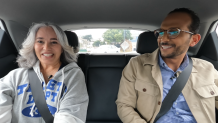
Less than one minute into the ride – and less than two blocks away from our pickup point – there were already signs of trouble.
Despite a green light, the car sat there for two minutes without budging.
“It’s very confused,” Borges said from the back seat. “Poor thing.”
The car eventually got through the intersection, but there were even more problems to come.
A construction sign up ahead indicated the far-right lane the vehicle was traveling in would be closed and was signaling vehicles to merge into the center lane. For more than three minutes, the car haltingly inched forward, but kept stopping, sometimes straddling the far-right and center lanes without moving.
“It’s a very safe situation for the car to turn and it’s just staying here,” Borges said. “I’m not sure why.”
Then, suddenly, the car accelerated and veered straight towards the median, stopping just short of hitting it.
“Oh, oh!” Borges exclaimed from the back seat. “This is not good.”
The car sat there occupying the far-left lane and part of the center lane without budging, as rush hour traffic backed up for blocks behind it.
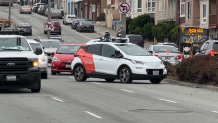
Not even coaching from Borges could get the car moving again as onlookers stared and frustrated drivers honked their horns.
“Turn your wheel right!” she instructed.
After being stuck for twenty minutes, a Cruise employee arrived and drove the car away in manual mode.
The company declined an interview request to explain what happened, but sent a statement saying the issue stemmed from an “unexpected construction zone” that would have required several lane changes.
“The better course was for the [autonomous vehicle] to come to a safe stop rather than proceed,” the statement said.
Tweaking the technology to be able to handle every type of roadblock could take the industry years, according to experts, so gearing up driverless cars to navigate all across the country may still be a long road ahead.
“I'm rooting for this,” Borges said. “I want this to happen, but with what I saw right now, it's a big no for me.”
You can explore the entire California DMV database of autonomous vehicle collisions below.
Watch our entire investigative series
- Part 1: Driverless cars seek San Francisco expansion despite worries tech is unsafe
- Part 2: CPUC votes to expand driverless car operations in San Francisco
- Part 3: San Francisco city attorney files motion to pump the brakes on driverless cars
- Part 4: Google's Waymo says insurance data shows its driverless cars are safer than humans
- Part 5: Hit-and-run driver strikes pedestrian, tossing her into path of Cruise car in San Francisco
- Part 6: Driverless trucks and robot deliveries promise fewer traffic jams than robotaxis
- Part 7: Cruise says its robotaxis can now better detect emergency vehicles
- Part 8: California DMV orders Cruise's driverless cars off the road
- Part 9: Driverless cars immune from traffic tickets in California under current laws
- Part 10: GM's Cruise lays off nearly 25% of its workforce
- Part 11: Waymo's driverless cars surpass 7 million miles, but are they safer than human drivers?
- Part 12: Cruise probe blames poor internet, bad leadership, and "flawed" decisions for company's woes
- Part 13: Driverless Cruise car accused of almost hitting 7 yr old after similar close call involving kids
- Part 14: Cruise offers to pay $112,500 in fines to settle claims driverless car company misled regulators
- Part 15: Uber Eats now uses Waymo Self-Driving cars to offer driverless deliveries
- Part 16: Bills aimed at closing traffic ticket loophole for driverless cars get initial green light
Contact The Investigative Unit
submit tips | 1-888-996-TIPS | e-mail Bigad
